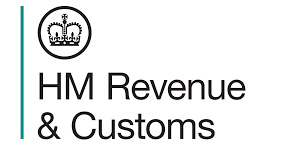HMRC SDLT: Reliefs: Transfers Due to Parliamentary Constituency Reorganisation – Overview and Rules
Reliefs: Transfers in Consequence of Reorganisation of Parliamentary Constituencies
This section provides information about the reliefs applicable to transfers that occur due to the reorganisation of parliamentary constituencies. It includes a general overview and detailed rules under the Finance Act 2003, Section 67.
- SDLTM25505 – General overview of FA03/S67
- SDLTM25510 – Detailed rules
“`

Read the original guidance here:
HMRC SDLT: Reliefs: Transfers Due to Parliamentary Constituency Reorganisation – Overview and Rules
SDLTM25500 – Reliefs: Transfers in Consequence of Reorganisation of Parliamentary Constituencies
What Are Parliamentary Constituencies?
Parliamentary constituencies are areas in the UK that elect a Member of Parliament (MP) to the House of Commons. These constituencies can change over time as review processes occur to ensure fair representation. When changes happen, certain administrative actions may require consideration under stamp duty land tax (SDLT) rules.
Understanding SDLT Reliefs
When transferring property in connection with the reorganisation of parliamentary constituencies, relief from stamp duty may apply. This means that the usual tax rate may not apply in specific circumstances if the changes relate to:
– Transfers of property that happen because of constituency alterations.
– Situations where there is no change in ownership, particularly among local councils or bodies involved in the reorganisation.
It’s important to understand the conditions that must be met to qualify for this relief.
Key Principles for Relief
The legislation provides specific guidelines for relief from SDLT during these transfers. Here are the main points:
1. Transfer Types: Relief applies to transfers between qualifying entities. For instance, if a local council takes ownership of a property belonging to another local authority due to boundary changes, this may qualify for relief.
2. No Change of Ownership: Relief is more likely to be granted when the ownership does not substantially change. This means if one public body simply takes over the responsibilities of another without a sale, SDLT may not apply.
3. Constituency Change Registration: The changes in constituency boundaries must be officially recognised and documented. This includes a formal review and a report confirming the alterations.
4. Eligible Bodies: Only certain types of organisations are eligible for relief. Local authorities and other public sector bodies typically fall under this category.
Detailed Rules and Guidance
For a clearer understanding, let’s look closer at the detailed rules surrounding these transfers and the SDLT relief process.
Conditions for Relief
To be eligible for SDLT relief due to constituency reorganisation, the following conditions must be satisfied:
– There must be an official reorganisation of parliamentary constituencies.
– The property transfer should be a direct consequence of this reorganisation. For example, when a new constituency is formed, and public assets are redistributed, it should directly link to the changes.
Examples of Relief Application
Below are some practical examples of how these rules might apply:
– Example 1: If Local Council A has a property that falls within its area, and due to constituency changes, it becomes part of Local Council B’s area, Council A might transfer this property to Council B without incurring SDLT. The reorganisation of boundaries is the direct reason for the transfer, thereby qualifying it for relief.
– Example 2: Suppose a constituency reorganisation results in merging two neighbouring constituencies into one. The properties that were owned by both councils might be transferred into a new consolidated council arrangement. If there is no sale and the ownership remains within the public sector, the transfer may be exempt from SDLT.
Reporting and Documentation Requirements
When claiming SDLT relief, specific documentation and reporting are necessary. Here’s what you need to do:
– Submission of SDLT Return: Even if applying for relief, an SDLT return must be submitted. All relevant details of the transaction need to be included in the return.
– Evidence of Reorganisation: Include documentation that clearly shows the reorganisation of parliamentary constituencies has occurred. Acceptable documents might include official reports or announcements from credible government sources.
– Details About the Transfer: Provide information about the transfer itself, including the parties involved, dates, and property details.
Calculating the Relief
In some transfer cases, while you might qualify for relief, certain aspects need careful calculation when applying for SDLT relief. Here are the steps to follow:
– Determine the Value: Establish the market value of the property being transferred. Relief applies only if the transfer value meets specific criteria.
– Review Potential Additional Charges: If the transfer involves additional considerations beyond merely taking over property ownership, these should be examined. The relief may not apply if the transaction includes other forms of payment or compensation.
Key Contacts for Questions and Further Guidance
For organisations that need additional information or wish to clarify the relief process, it’s important to reach out to the appropriate government departments. Contact points include:
– HM Revenue and Customs (HMRC): They can provide guidance on SDLT relief applications and other related queries.
– Local Authorities: Local councils can be a resource for understanding how constituency changes affect property transfers.
Where to Find More Information
For comprehensive information on SDLT and the conditions related to relief during constituency reorganisation, refer to the detailed regulations outlined in legal documents and official guidance published by HMRC.
For running queries related to SDLT and eligibility for relief, you can explore the following resource: SDLTM25500 – Reliefs: Transfers in consequence of reorganisation of parliamentary constituencies.
Remember, engaging with proper resources and maintaining accurate documentation will ease the process of claiming relief under these circumstances. Make sure to stay updated with current legislation as rules may evolve and affect eligibility.







